Targeted Therapy in Cancer: A Personalized Approach to Treatment
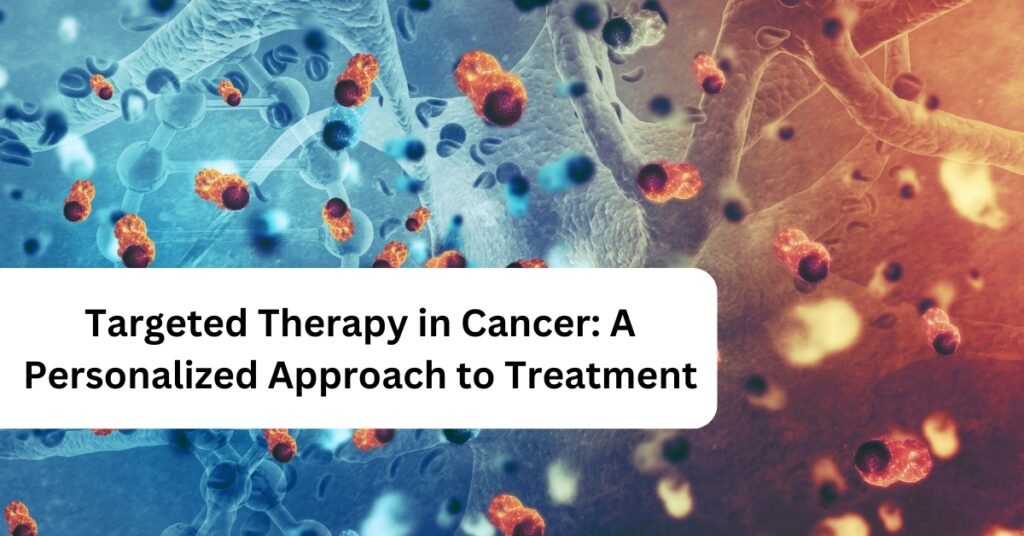
Unlike traditional treatments such as chemotherapy and radiation, which attack both healthy and cancerous cells, targeted therapy takes a more precise approach. This innovative treatment zeroes in on specific molecules or genetic markers involved in cancer growth, offering a more tailored and often less toxic alternative for patients. What is Targeted Therapy? Targeted therapy is a type of cancer treatment that focuses on specific genes, proteins, or other cellular mechanisms involved in cancer cells’ growth and survival. By blocking these targets, the therapy can slow down or stop cancer growth while sparing healthy cells. This differs from conventional treatments, which can’t distinguish between cancerous and non-cancerous tissues, often leading to widespread side effects. There are two main types of targeted therapy: How Does Targeted Therapy Work? Cancer cells often have mutations or abnormal proteins that allow them to grow uncontrollably. Targeted therapy works by identifying these abnormalities and blocking the processes that allow the cancer to thrive. For example, some breast cancers are driven by an excess of the HER2 protein. Targeted drugs like trastuzumab (Herceptin) specifically inhibit HER2, slowing or halting the growth of these cancer cells. Another well-known example is in lung cancer, where certain mutations in the EGFR gene drive cancer growth. Targeted drugs like erlotinib (Tarceva) or osimertinib (Tagrisso) can block these mutated proteins, leading to more effective treatment with fewer side effects compared to traditional chemotherapy. Advantages of Targeted Therapy Limitations and Challenges While targeted therapy has revolutionized cancer treatment, it’s important to understand its limitations. Not all cancers have identifiable targets, and in some cases, cancer cells may develop resistance to these therapies over time. This resistance can occur when cancer cells adapt or find alternative pathways to grow. Additionally, targeted therapy may work best when combined with other treatments, such as chemotherapy, radiation, or immunotherapy. Research is ongoing to find ways to overcome resistance and expand the use of targeted therapies for more cancer types. Who Can Benefit from Targeted Therapy? Targeted therapy is not suitable for every cancer or every patient. It’s most effective for cancers that have specific genetic mutations or molecular markers, such as: Before starting treatment, patients often undergo molecular testing or a biopsy to determine whether their tumor has specific genetic alterations that can be targeted. This personalized approach ensures that the treatment is as effective as possible. The Future of Targeted Therapy The field of targeted therapy is continually evolving, with new treatments being developed and approved each year. As research into cancer genetics and molecular biology advances, we expect to see even more targeted options that can benefit a wider range of cancer types. These advancements not only improve survival rates but also offer patients a better quality of life during treatment. At my practice, I believe in offering cutting-edge cancer treatments, including targeted therapy, as part of a comprehensive and personalized care plan. By staying at the forefront of cancer research, I’m able to provide patients with the latest and most effective options available. If you’re interested in learning more about targeted therapy and whether it might be right for your cancer treatment, I encourage you to schedule a consultation. Together, we can explore the best course of action to tackle your cancer with precision and care.
Immunotherapy: A Breakthrough in Cancer Treatment
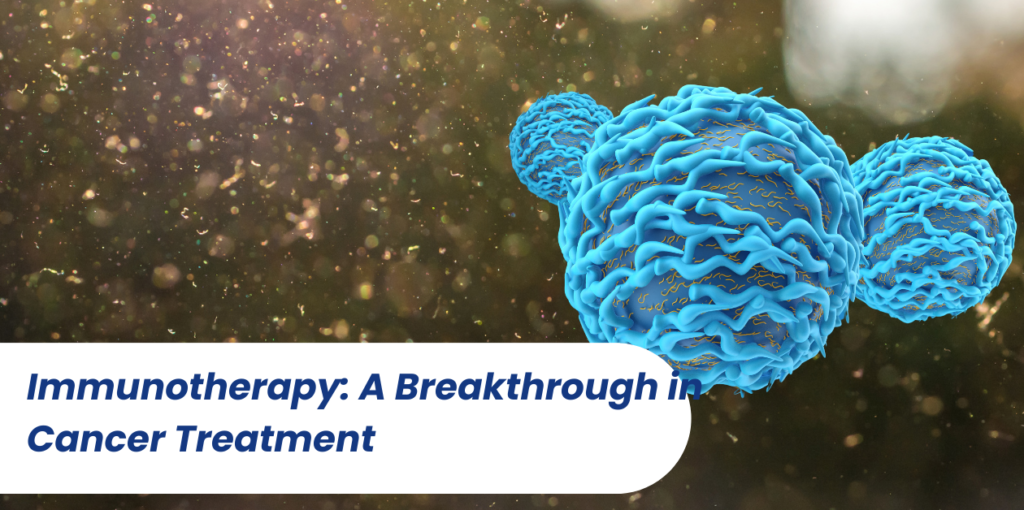
As an oncologist, I’ve seen remarkable progress in cancer treatments over the years. One of the most promising advancements is immunotherapy—a treatment designed to harness the power of your immune system to fight cancer. For patients battling cancers like melanoma, lung cancer, and more, immunotherapy has emerged as a game-changer, offering hope in cases where other treatments may have fallen short. What is Immunotherapy? Immunotherapy is a type of cancer treatment that uses the body’s immune system to identify and destroy cancer cells. Unlike chemotherapy or radiation, which target cancer cells directly, immunotherapy strengthens or manipulates the immune system to do the work. This approach can offer a more targeted, and sometimes less toxic, alternative to traditional cancer therapies. There are several types of immunotherapy, including: How Does Immunotherapy Work? The immune system is adept at fighting infections and diseases, but cancer cells can sometimes hide from immune detection. Immunotherapy works by removing the “brakes” that cancer cells use to evade immune responses. This allows the immune system to recognize better and attack these rogue cells. Checkpoint inhibitors, for example, block proteins like PD-1 or CTLA-4 on immune cells, which normally act as checkpoints to prevent immune overactivity. When these proteins are blocked, the immune system becomes more aggressive toward cancer cells. This has been particularly effective in treating cancers such as non-small cell lung cancer, melanoma, and certain types of kidney and bladder cancers. Benefits of Immunotherapy One of the most significant benefits of immunotherapy is its potential for long-lasting effects. In many cases, patients who respond to immunotherapy treatments continue to experience remission even after the therapy has ended. Some patients with advanced cancer have even seen their tumors shrink dramatically or disappear. Immunotherapy also tends to have fewer side effects than chemotherapy or radiation, which can damage healthy cells. Instead of attacking both healthy and cancerous cells, immunotherapy primarily enhances the immune system’s ability to target cancer. Challenges and Considerations While immunotherapy offers immense promise, it’s not without challenges. Not all patients respond to this treatment, and predicting who will benefit remains a key area of research. Additionally, some patients experience immune-related side effects, where the immune system may attack healthy tissues. These side effects can range from mild inflammation to more severe complications in organs like the liver, lungs, or skin. It’s also important to note that immunotherapy may not be a stand-alone solution for every cancer type. For some, it works best when combined with other treatments like chemotherapy, radiation, or surgery. The success of immunotherapy varies depending on the type and stage of cancer, as well as individual patient factors. Immunotherapy and the Future of Cancer Treatment Immunotherapy represents a new frontier in cancer treatment, one that is still evolving. Ongoing research and clinical trials are exploring how to make this therapy even more effective, and we’re learning more every day about which cancers are most responsive. As an oncologist, I believe in providing patients with the most advanced, personalized care possible. Immunotherapy allows us to offer new treatment avenues, particularly for those who may have run out of traditional options. It’s a testament to how far we’ve come in understanding and treating cancer, and I’m optimistic about the future. If you or a loved one are considering immunotherapy, discussing the potential benefits, risks, and treatment options with your oncology team is essential. Together, we can explore whether this innovative treatment could be part of your cancer care plan.
Understanding Stomach Cancer: What It Is and Who Is at Risk ?
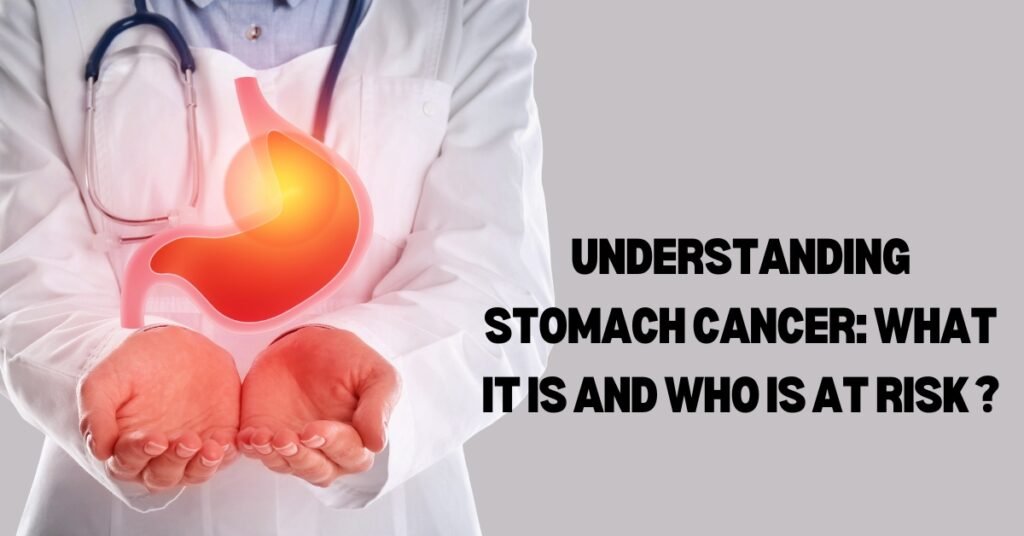
Stomach cancer, also known as gastric cancer, is a serious and often challenging diagnosis. As an oncologist, I frequently encounter patients and families seeking to understand this disease better, including its risk factors, symptoms, and prevention strategies. In this blog, I aim to provide a clear overview of stomach cancer, who is at risk, and what you can do to mitigate your risk. What Is Stomach Cancer? Stomach cancer occurs when abnormal cells in the stomach lining begin to grow uncontrollably, forming tumors. These tumors can invade and damage nearby tissues and organs. Stomach cancer is often classified into different types, with the most common being adenocarcinoma, which originates from the glandular cells of the stomach lining. The progression of stomach cancer can be divided into several stages, from early-stage cancer confined to the stomach lining to more advanced stages where the cancer has spread to nearby lymph nodes or distant organs. Early detection is crucial because stomach cancer is often asymptomatic in its initial stages, which makes it challenging to diagnose early. Symptoms of Stomach Cancer The symptoms of stomach cancer can be subtle and may resemble those of other, less serious conditions. Common symptoms include: If you experience any of these symptoms persistently, it is important to consult a healthcare professional for a thorough evaluation. Who Is at Risk for Stomach Cancer? Several factors can increase the risk of developing stomach cancer. While some of these factors are beyond our control, understanding them can help with early detection and prevention. Risk factors include: Preventive Measures and Early Detection While not all risk factors can be controlled, there are steps you can take to reduce your risk: Conclusion Stomach cancer is a serious condition with various risk factors and symptoms that can often be mistaken for other health issues. Understanding the risk factors and symptoms is crucial for early detection and prevention. If you have concerns about stomach cancer or are at higher risk, I encourage you to consult with a healthcare professional for personalized advice and appropriate screening options. Early diagnosis and treatment can make a significant difference in outcomes, so staying informed and proactive about your health is key. Together, we can work towards a future with better prevention, early detection, and treatment of stomach cancer.
Childhood Cancer Awareness Month: A Time to Reflect, Support, and Take Action
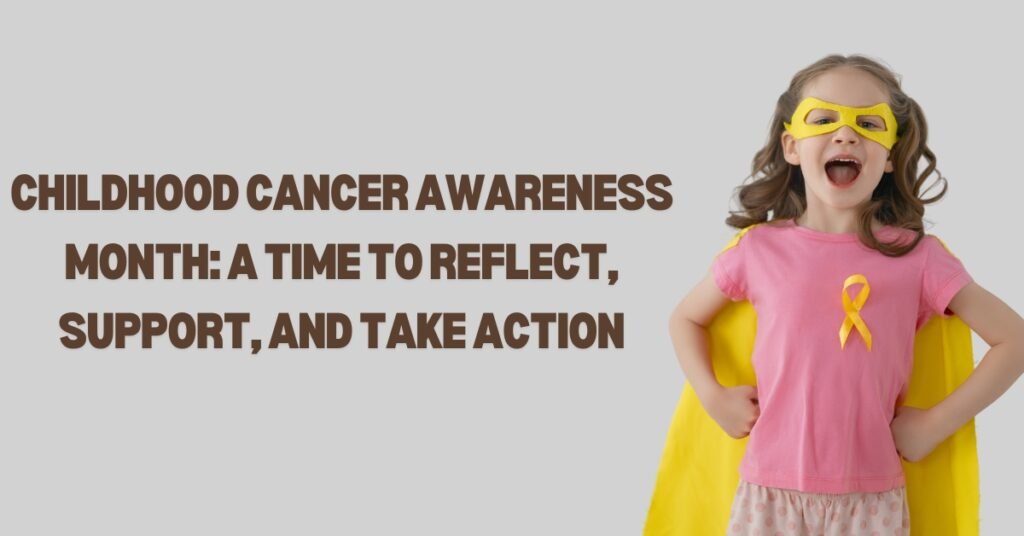
As September rolls around each year, it brings with it a time of reflection, hope, and action for those of us in the oncology community. This month is dedicated to Childhood Cancer Awareness—a cause that is both deeply personal and profoundly important to me as an oncologist. Childhood Cancer Awareness Month is not just a time to wear gold ribbons; it’s an opportunity to shine a spotlight on the unique challenges faced by young cancer patients and their families, to celebrate the victories we’ve achieved, and to acknowledge the work that still lies ahead. Understanding Childhood Cancer Childhood cancer is a broad term that encompasses a variety of cancers that occur in children under the age of 18. The most common types include leukemia, brain tumors, neuroblastoma, and lymphomas, among others. Unlike adult cancers, which are often linked to lifestyle or environmental factors, the causes of childhood cancers are largely unknown and can occur randomly without warning. Despite being relatively rare compared to adult cancers, childhood cancer remains the leading cause of death by disease for children in many parts of the world. Each year, thousands of children and their families face the unimaginable reality of a cancer diagnosis, embarking on a journey that is both physically and emotionally taxing. The Impact of a Childhood Cancer Diagnosis – Childhood Cancer Awareness Month The impact of a cancer diagnosis on a child is profound. It interrupts the most formative years of their life, affecting their education, social development, and overall well-being. The treatment process—often involving surgery, chemotherapy, radiation, and extended hospital stays—can be grueling. Children may miss out on the joys of childhood, and their families are thrust into a world of uncertainty, fear, and financial strain. However, it is not just the physical burden of the disease that we must address. The emotional and psychological toll on both the child and their family is significant. Parents often find themselves grappling with feelings of helplessness, while the child may struggle with the isolation and anxiety that can accompany long-term treatment. This is why comprehensive care, which includes psychological support, is crucial for these young patients. Advances in Treatment and Hope for the Future The good news is that we have made tremendous strides in the treatment of childhood cancers over the past few decades. Advances in research and treatment protocols have led to significant improvements in survival rates. For example, the survival rate for childhood leukemia has increased dramatically, with many children now living long, healthy lives post-treatment. But while these advances are encouraging, they are not the end of the story. The treatments that save lives can also have long-term side effects, impacting the child’s health well into adulthood. This is why ongoing research is essential—not just to find cures, but to develop treatments that are less toxic and more targeted, minimizing the long-term impact on survivors. How You Can Help Raising awareness during Childhood Cancer Awareness Month is about more than just recognizing the existence of this disease—it’s about taking action. Here are a few ways you can make a difference: 1. Support Research: Consider donating to organizations that fund childhood cancer research. These funds are critical for developing new treatments and ultimately finding a cure.2. Spread the Word: Use your voice to raise awareness. Whether through social media, community events, or personal conversations, spreading knowledge about childhood cancer helps bring attention to the cause.3. Support Families: If you know a family affected by childhood cancer, offer your support. This could be as simple as lending an ear, helping with day-to-day tasks, or connecting them with resources.4. Advocate for Change: Get involved in advocacy efforts that push for increased funding for childhood cancer research and better support for affected families. Your voice can help drive policy changes that make a difference. A Message of Hope As an oncologist, I have the privilege of witnessing the resilience and strength of young cancer patients and their families. While the journey is often long and difficult, the courage these children show is nothing short of inspiring. Childhood Cancer Awareness Month is a time to honor their bravery, remember those we have lost, and recommit ourselves to the fight against this devastating disease. Together, we can work towards a future where no child has to face cancer and where every child who does can look forward to a full, healthy life. Let’s make September a month of action, hope, and progress.
Lung Cancer Explained: Key Facts and Figures
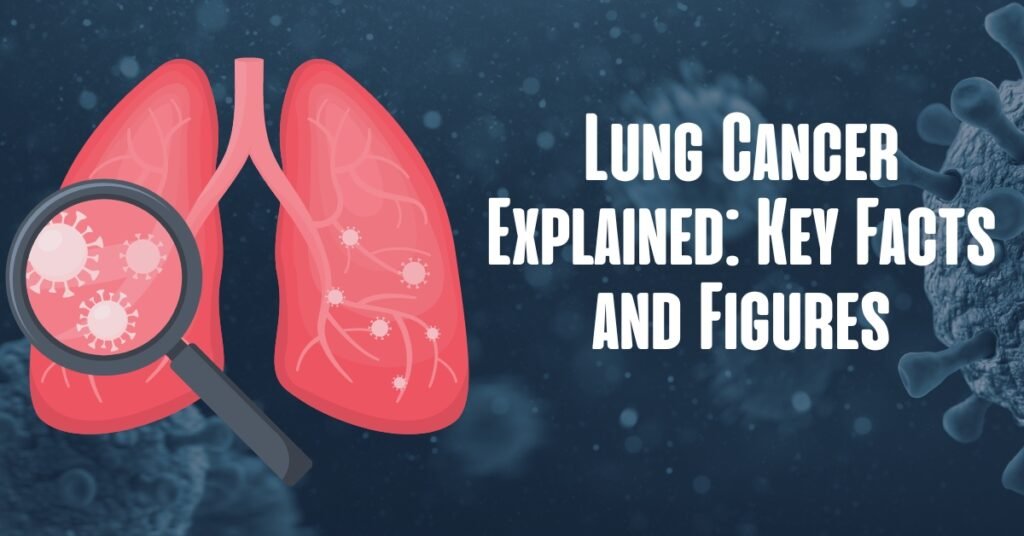
What is Lung Cancer ? Lung cancer is one of the most prevalent and deadliest forms of cancer worldwide. Despite advancements in medical research and treatment, it continues to pose a significant health challenge. As an oncologist, it is my duty to provide comprehensive information about this disease, shedding light on its key facts and figures to enhance awareness and encourage early detection and prevention. Understanding Lung Cancer Lung cancer originates in the tissues of the lungs, typically in the cells lining the air passages. There are two primary types of lung cancer: Key Facts and Figures 2. Lung Cancer – Risk Factors: Symptoms- Lung Cancer : Diagnosis-Lung Cancer : Treatment Options-Lung Cancer : Survival Rates: Lung cancer remains a formidable health challenge, but increased awareness, early detection, and advancements in treatment are making a significant impact. As we continue to educate and support patients and their families, we move closer to reducing the burden of this disease. If you or a loved one are at risk, I encourage you to speak with a healthcare provider about screening and prevention strategies. Together, we can work towards a future with fewer lung cancer diagnoses and more survivors. Recommanded: Top 5 Cancer-Fighting Nutrients You Need in Your Diet
Top 5 Cancer-Fighting Nutrients You Need in Your Diet

As an oncologist, I am often asked about the role of diet in cancer prevention and management. While no single food can guarantee cancer prevention, incorporating certain nutrients into your daily diet can significantly reduce your risk. Here are the top five cancer-fighting nutrients that everyone should consider including in their meals: 1. Leafy Greens -Top 5 Cancer-Fighting Nutrients Leafy greens, such as spinach, kale, and Swiss chard, are rich in vitamins, minerals, and antioxidants. These vegetables contain carotenoids, flavonoids, and folate, all of which have been linked to a lower risk of certain cancers. For instance, studies have shown that high intake of folate can reduce the risk of breast, pancreatic, and colon cancers. Including a variety of leafy greens in your diet provides a broad spectrum of nutrients essential for maintaining overall health and reducing cancer risk. How to Include: 2. Berries Berries, such as blueberries, strawberries, and raspberries, are packed with antioxidants like vitamin C and ellagic acid. These antioxidants help neutralize free radicals, which can damage cells and lead to cancer. The high fiber content in berries also supports digestive health, which is crucial for reducing the risk of colorectal cancer. How to Include: 3. Nuts and Seeds Nuts and seeds, including almonds, walnuts, chia seeds, and flaxseeds, are excellent sources of healthy fats, fiber, and antioxidants. Omega-3 fatty acids found in walnuts and flaxseeds have anti-inflammatory properties and have been shown to reduce the risk of breast and prostate cancers. Additionally, the high fiber content aids in maintaining a healthy digestive system. How to Include: 4. Cruciferous Vegetables Cruciferous vegetables like broccoli, cauliflower, Brussels sprouts, and cabbage contain compounds called glucosinolates. When these vegetables are chopped or chewed, glucosinolates are broken down into biologically active compounds that have been shown to inhibit the growth of cancer cells and promote their elimination. How to Include: 5. Garlic and Onions Garlic and onions are part of the allium family, which is known for its sulfur-containing compounds. These compounds have been shown to boost the immune system and have anti-cancer properties, particularly in reducing the risk of stomach, colorectal, and prostate cancers. Regular consumption of garlic and onions can also promote detoxification processes in the body. How to Include: Conclusion Incorporating these cancer-fighting nutrients into your diet is a proactive step towards reducing your cancer risk and enhancing overall health. Remember, a balanced diet rich in a variety of fruits, vegetables, nuts, seeds, and whole grains, combined with a healthy lifestyle, can make a significant difference. As always, consult with your healthcare provider or a nutritionist to tailor dietary recommendations to your specific needs. By prioritizing these nutrient-dense foods, you are not only supporting your body’s natural defenses but also taking an active role in your long-term health. Stay informed, stay healthy, and make every meal an opportunity to nourish your body and mind. For more personalized advice and cancer-related information, feel free to schedule a consultation.Together, we can create a comprehensive plan that supports your health and well-being.
Ovarian Cancer: Insights from an Oncologist

Welcome to our comprehensive blog on ovarian cancer. As an oncologist, I aim to shed light on this challenging disease, offering valuable insights into its detection, treatment, and management. Ovarian cancer, often referred to as the “silent killer,” requires our utmost attention due to its subtle early symptoms and the complexity of its treatment. Understanding Ovarian Cancer Ovarian cancer originates in the ovaries, the reproductive glands where eggs are produced. It is a heterogeneous disease with various subtypes, the most common being epithelial ovarian cancer, which accounts for about 90% of cases. Other less common types include germ cell tumors and stromal tumors. Risk Factors and Prevention Several factors can increase a woman’s risk of developing ovarian cancer: Preventative measures include genetic counseling and testing for those with a family history, the use of oral contraceptives, which has been shown to reduce risk, and risk-reducing surgery in high-risk women. Ovarian cancer Symptoms and Diagnosis Ovarian cancer is notoriously difficult to detect early because its symptoms often mimic less severe conditions. Key symptoms include: If these symptoms persist for more than a few weeks, further evaluation is necessary. Diagnostic tools include pelvic examinations, imaging tests (ultrasound, CT scans), and blood tests for tumor markers like CA-125. However, the definitive diagnosis is often made through surgical biopsy. Treatment Options Treatment strategies for ovarian cancer depend on the stage and type of the cancer, as well as the patient’s overall health. The primary modalities include: Advancements and Research Ongoing research is crucial in the fight against ovarian cancer. Studies are focusing on improving early detection methods, understanding genetic factors more comprehensively, and developing novel treatments. Clinical trials are an essential component, offering patients access to cutting-edge therapies and contributing to the broader understanding of the disease. Supporting Patients and Families Beyond the clinical aspects, providing emotional and psychological support to patients and their families is vital. Ovarian cancer treatment can be physically and emotionally taxing, and comprehensive care should address these dimensions. Support groups, counseling services, and patient education can significantly impact the overall treatment experience. Conclusion As an oncologist, my commitment is to stay at the forefront of ovarian cancer research and treatment, ensuring that patients receive the best possible care. By understanding the complexities of this disease, advocating for early detection, and embracing innovative treatments, we can improve outcomes and offer hope to those affected by ovarian cancer. For more information or to schedule a consultation, please feel free to contact our office. Together, we can make strides in the fight against ovarian cancer.
Colon Cancer Insights and guidance from an Oncologist : Awareness, Prevention, and Treatment
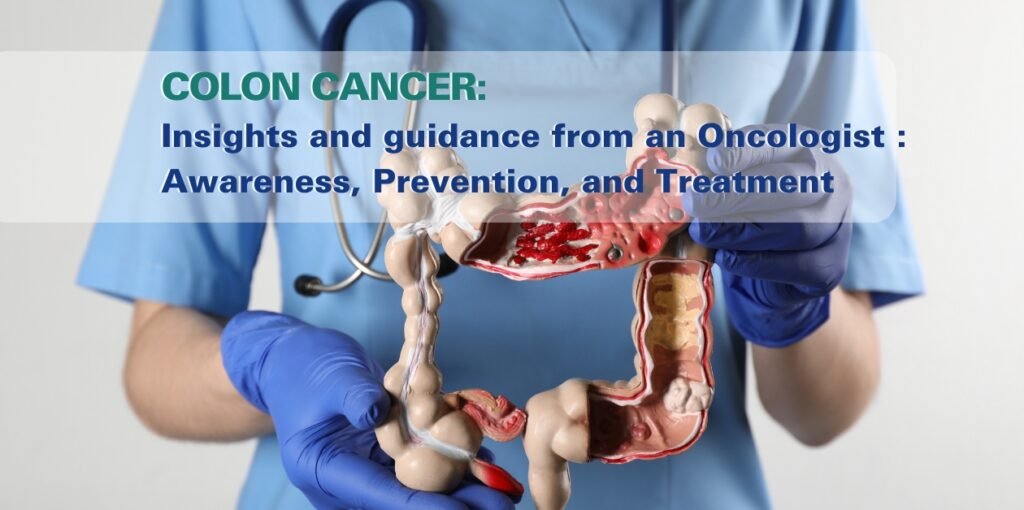
Colon cancer, also known as colorectal cancer, is a significant health concern worldwide. As oncologists dedicated to the prevention and treatment of this disease, we aim to provide comprehensive information to help you understand colon cancer, recognize its symptoms, and take proactive steps towards prevention and early detection. What is Colon Cancer? Colon cancer originates in the colon or rectum, parts of the large intestine. It typically begins as benign polyps, which can evolve into malignant tumors over time. Early detection and removal of these polyps are crucial in preventing the progression to cancer. Risk Factors Several factors can increase the risk of developing colon cancer: Symptoms to Watch For Early-stage colon cancer may not present noticeable symptoms, making regular screenings essential. However, as the disease progresses, symptoms may include: Prevention and Early Detection Preventive measures and early detection are key in combating colon cancer: Treatment Options Treatment for colon cancer depends on the stage and location of the cancer, as well as the patient’s overall health. Common treatments include: Colon cancer is a serious but often preventable and treatable disease. Awareness, regular screenings, and healthy lifestyle choices play vital roles in reducing risk and ensuring early detection. As a dedicated oncologist, I am committed to providing the best possible care and support for our patients. If you have any concerns or questions about colon cancer, please don’t hesitate to reach out to our team. For more information or to schedule a screening, contact us. Your health and well-being are our top priorities. Let’s work together to fight colon cancer and promote a healthier future.
HPV and Throat Cancer: Understanding the Link for Prevention and Early Detection
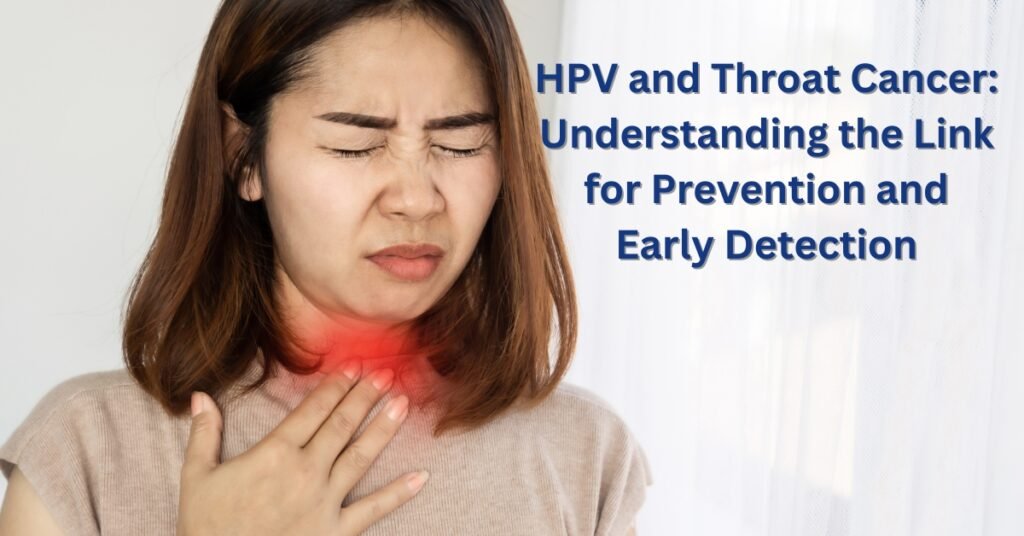
In recent years, HPV and throat cancer have become increasingly linked. While HPV is most commonly known for causing cervical cancer, its role in throat cancer has become a critical area of research. This blog aims to empower you with valuable insights into HPV and throat cancer, helping you understand the connection, identify potential risks, and navigate prevention and early detection strategies. HPV 101: Understanding the Human Papillomavirus (HPV and Throat Cancer) HPV is a diverse group of over 200 viruses, primarily transmitted through skin-to-skin contact during sexual activity. It holds the title of the most common sexually transmitted infection globally. Thankfully, most HPV infections are transient and clear up on their own. However, certain high-risk strains, like HPV-16, can lead to various cancers, including throat cancer. The Changing Landscape of Throat Cancer: HPV Takes Center Stage Traditionally, throat cancer, particularly oropharyngeal cancer affecting the tonsils and tongue base, was heavily associated with tobacco and alcohol use. However, recent epidemiological studies reveal a dramatic shift. HPV, particularly HPV-16, is now recognized as a major causative factor in a rapidly growing number of HPV-positive throat cancer cases. The statistics are alarming: around 70% of oropharyngeal cancers in the United States are attributed to HPV infection. This trend is particularly concerning in younger, non-smoking demographics, suggesting a potential link to changing sexual behaviors. Unveiling the Mechanism: How HPV Causes Throat Cancer HPV’s ability to alter the host cell’s genetic makeup is what makes it potentially carcinogenic. During infection, the viral DNA integrates into the human cell’s DNA, disrupting normal cellular processes and triggering uncontrolled growth, a hallmark of cancer. High-risk HPV strains like HPV-16 harbor specific proteins, E6 and E7, that play a villainous role in this transformation. These proteins act like molecular assassins, inactivating crucial tumor suppressor genes like p53 and Rb. Normally, these genes act as guardians, ensuring proper cell division and preventing uncontrolled growth. By disabling these safeguards, HPV creates an environment conducive to the development of HPV- throat cancer. Recognizing the Signs: Symptoms and Diagnosis of HPV Throat Cancer The symptoms of HPV-related throat cancer can be subtle and mimic those of less serious conditions. Here’s a list of potential warning signs to be aware of: Early diagnosis is crucial. A combination of approaches is typically employed, including a thorough physical examination, imaging studies like CT scans or MRIs, and a biopsy, where a tissue sample is extracted for microscopic evaluation. HPV testing on the tumor sample can confirm the presence of the virus and guide treatment decisions for HPV- throat cancer. Recomanded: How to Prevent Breast Cancer: A Comprehensive Guide Tailored Treatment and a Brighter Prognosis for HPV-Positive Throat Cancer The treatment for HPV-related throat cancer often involves a multi-pronged attack, combining surgery, radiation therapy, and chemotherapy. The good news is that patients with HPV-positive oropharyngeal cancer generally have a more favorable prognosis compared to those with HPV-negative tumors. This improved outcome is attributed to the inherent biological differences between HPV-related and non-HPV-related cancers, along with better responses to treatment for HPV-positive throat cancer. Prevention is Paramount: Vaccination and Beyond for HPV and Throat Cancer Since prevention is key in the fight against HPV-related cancers, vaccination stands as a powerful weapon in our arsenal. The HPV vaccine, initially developed to prevent cervical cancer, has also proven remarkably effective in preventing HPV infections that can lead to throat cancer. Vaccination is strongly recommended for preteens (both boys and girls) but can also benefit young adults who haven’t been vaccinated earlier. Public health measures advocating for safe sexual practices and regular screenings for HPV are equally important in preventing the spread of the virus and ensuring early detection of potential HPV-positive throat cancer. The Road Ahead: A Future Free from HPV-Related Throat Cancer The link between HPV and throat cancer underscores the ever-evolving landscape of cancer epidemiology and the significance of proactive measures. As an oncologist, I strongly believe in raising awareness and educating the public about HPV and its potential to cause various cancers, including those of the throat. By promoting widespread vaccination and early detection strategies, we can significantly reduce the incidence of HPV-related throat cancer and improve the lives of individuals affected by this disease. Conclusion: Empowering Yourself Against HPV and Throat Cancer Knowledge is power, especially when it comes to your health. By understanding the link between HPV and throat cancer, you can take steps to protect yourself and your loved ones. Here’s a summary of the key takeaways: Schedule a Vaccination Appointment: Talk to your doctor about HPV vaccination for yourself or your children.
Demystifying Brain Cancer: A Guide to Types, Treatments, and Hope for the Future
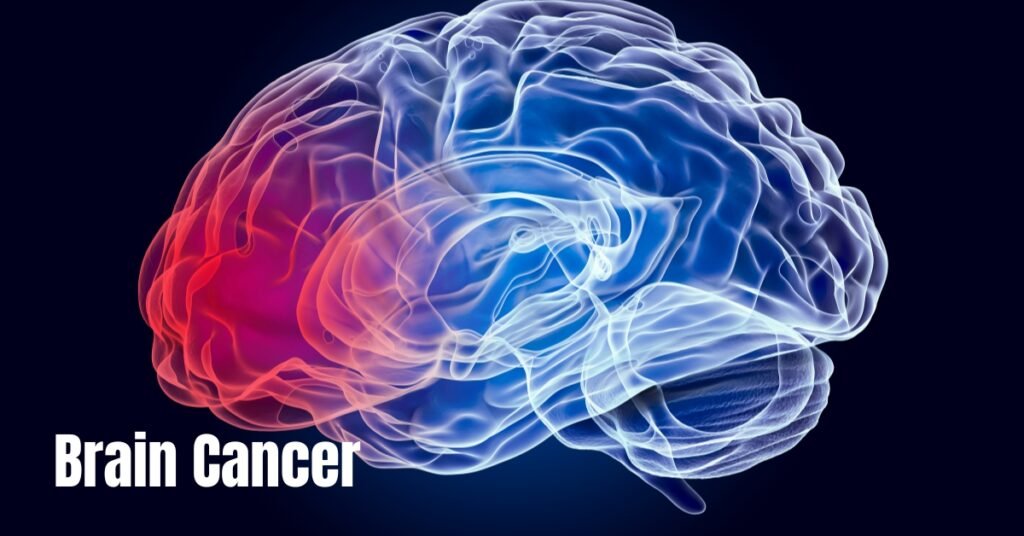
As an oncologist specializing in the treatment of brain cancer, I’m deeply committed to shedding light on this complex and often challenging disease. In this comprehensive guide, we’ll explore the basics of brain cancer, including its types, symptoms, diagnosis, treatment options, and the latest advancements in research and care. What is Brain Cancer? Brain cancer refers to the abnormal growth of cells within the brain or its surrounding tissues. These cancerous cells can form tumors that interfere with normal brain function and may spread to other parts of the central nervous system. Brain cancer can be primary, originating in the brain itself, or secondary, resulting from cancer that has spread from other parts of the body (metastatic brain cancer). Types of Brain Cancer: There are several types of brain cancer, each with its own characteristics and treatment approaches. Common types include: Brain Cancer Symptoms and Diagnosis: The symptoms of brain cancer can vary depending on factors such as tumor size, location, and rate of growth. Common symptoms may include headaches, seizures, changes in vision or hearing, cognitive changes, and difficulty with balance or coordination. Diagnosis typically involves imaging tests such as MRI or CT scans, along with a biopsy to confirm the presence of cancerous cells. Brain CancerTreatment Options: Treatment for brain cancer depends on factors such as tumor type, size, location, and the overall health of the patient. Treatment options may include: Advancements in Research and Care- brain cancer: Ongoing research into the biology of brain cancer, as well as the development of innovative treatment approaches such as immunotherapy and precision medicine, offer hope for improved outcomes and quality of life for patients. Clinical trials are underway to evaluate new therapies and combinations of treatments, with the goal of finding more effective and less toxic options for patients with brain cancer. In conclusion, while brain cancer presents significant challenges, advances in research and care are bringing new hope to patients and families affected by this devastating disease. As oncologists, researchers, and advocates, we remain committed to advancing our understanding of brain cancer and improving outcomes for all those affected. By raising awareness, supporting research, and providing compassionate care, we can continue to make progress in the fight against brain cancer and ultimately find a cure. Recomanded: Bladder Cancer Unveiled: Insights, Innovations, and Paths to

